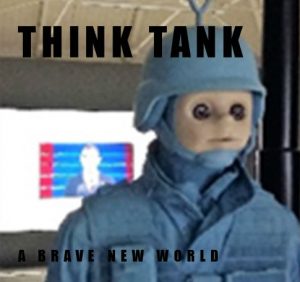Association News
Think Tank: Skilled Navigation for Associations
April 10, 2017 - Association News

Benjamin Franklin supposedly once said, “If you fail to plan, you are planning to fail” whilst Thomas Edison is credited with, “I have not failed. I’ve just found 10,000 ways that won’t work.” Both are catchy quotes, but do they get us any closer to understanding the value of planning? Learning from our mistakes is one thing, but doing only that would be a random, time-consuming, and even dangerous way to manage!
Think of your role running an association as being the cox of a rowing eight. With your team-mates all powering away with one sole objective, it looks like you’re having an easy ride sitting at the back. But really your focus is half a mile ahead to the next bend, and beyond that to the finish line. Your team all want to get across the line, but you are the one making gentle adjustments to the tiller and varying the pace and power input to suit conditions, all with the longer view in mind. Make unreasonable demands on your crew and they burn out too soon. Yank the tiller from side to side and you collide with the competition, strike a bridge, capsize, or hit the bank. To win races you need an agreed objective, a strong crew, and a skilled navigator with a clear view of the course ahead and a vision of what lies beyond the bend!
Only trouble is, some associations lack clear objectives, or lose sight of them amid the pressures of day-to-day survival. So staying on track, let alone changing course to avoid fresh obstacles, is a challenge; new initiatives a test of stamina. So it’s hardly surprising that almost 70% of projects fail to hit target. But the reason they fail isn’t always lack of effort from the crew, but failure to do adequate research and forward planning. What’s needed are strategic objectives, wisely allocated resources, effectively managed time, and a clear change methodology. And perhaps that way we’ll stop trying to fix organisations symptomatically rather than systemically.
Of course, one of the challenges for bosses is finding the time and headspace to research and plan. And like-minded brainstorm partners! Or better still a skilled and objective third party to guide you through writing an unfettered wish list of the things you’d like to magic away. Having attributed a 1-10 pain scale to those issues, you can thin them out by trimming anything below an 8 to derive an initial agenda. Ranking these again, this time for difficulty between 0 (requiring an act of God) and 10 (easy-peasy), and having considered the ‘rocks in the road’ which will either block further progress – or stimulate a burst of tangential or transformative thinking to get around them – a final set of challenges will emerge.
Only now is it time to look at the belief system, readiness, and capability of your organisation. Break them into their component parts, and analyse the gaps between your ultimate objective and the organisation’s current readiness. Along the way you’ll also have to account for critical mass, survivability, impact on the team, and the impact on your membership and financials.
By the end of all that you won’t be in any doubt when somebody asks, “What is the process for accountability and quality of execution of your mid-term plans? Is there a process? Have you separated it from operational and everyday management? And, are the right people involved? You could, with equal confidence, break the familiar logjam of continual ‘circular’ re-examination of the same issues that so bedevils so many membership boards! Or would that be too much to ask?
©2017 M J Hoare


